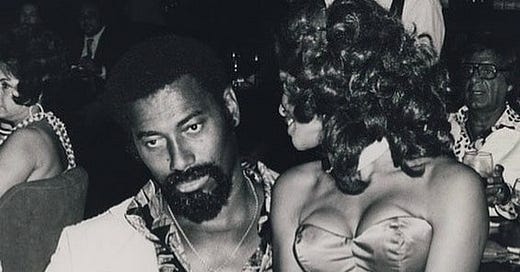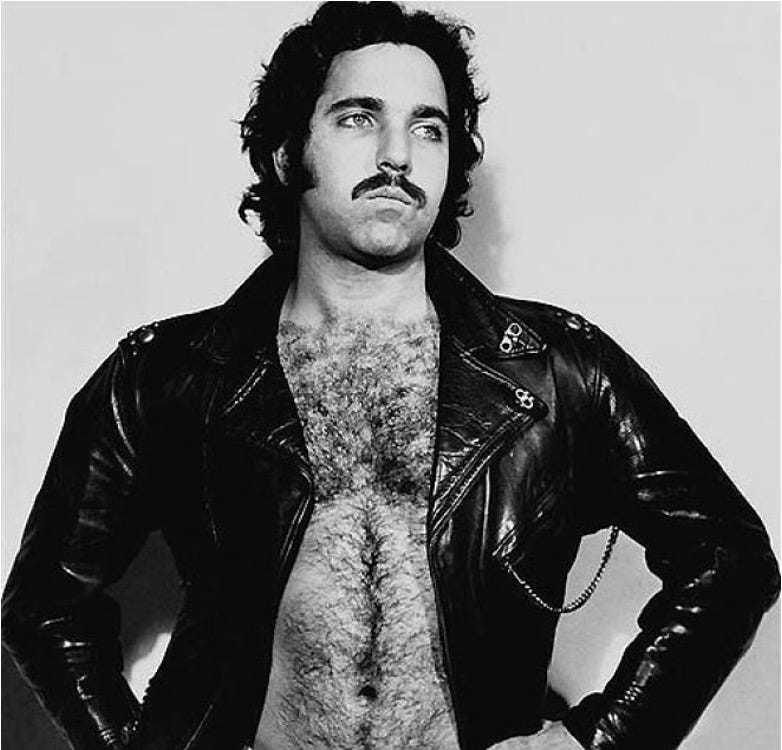Today a student told me in complete sincerity that DOGE had uncovered another scandal: the Pentagon is spending $600 million a year on sushi. I had never heard this claim before, but immediately replied, “I straight-up don’t believe it. There is no way that is true.” I knew it was too fishy to be right. Over lunch I looked it up and yeah, the sushi story was originally satire. In other words, it never happened. Yet my student had swallowed it hook, line, and sinker.
I know, I know. Another example of Poe’s Law. But we hear stuff like this all the time, and most people want to have some kind of an opinion. I’m honestly not sure why. Personally I would like to have fewer opinions; as an epistemologist it’s too much pressure. If you want an opinion, though, what’s the strategy for getting one? Here’s two approaches:
Do a deep dive into the topic and do your own research. While it didn’t take long to me to discover the sushi satire, lots of similar claims are complex and not so easy to source. Figuring out whether some claim is true or false can be a ton of work, and getting all the way to being 100% sure is often unreasonably, impractically difficult.
Just rely on some heuristics like, “I think the government wastes a bunch of money and my family’s all Trump voters, so this sushi story fits right in with my worldview. I’m going to believe it is true.” The risk with this option, of course, is that you might have some pretty bad heuristics.
I’m here to recommend a via media: Fermi estimates.
Fermi estimates
After the detonation of the first atomic explosion in the Trinity Test, Enrico Fermi commented,
About 40 seconds after the explosion, the air blast reached me. I tried to estimate its strength by dropping from about six feet small pieces of paper before, during, and after the passage of the blast wave. Since, at the time, there was no wind I could observe very distinctly and actually measure the displacement of the pieces of paper that were in the process of falling while the blast was passing. The shift was about 2½ meters, which, at the time, I estimated to correspond to the blast that would be produced by ten thousand tons of T.N.T. (source)
Some of the observers of Trinity broke out into cheers. Most stood there in shocked silence, awe, and terror at what had been unleashed. I love the image of Fermi just calmly dropping little pieces of paper into the atomic blast wave to calculate its power like it was a typical Monday morning. Ultimately the official estimate was that “The Gadget” in the New Mexico desert released the equivalent of 18.6 kilotons of T.N.T. Fermi’s middle school science fair technique was awfully, awfully close.
Fermi was famous for this kind of thing. How many piano tuners are in Chicago? How long would it take to move Mt. Fuji by dump truck? How many times could you sing “Happy Birthday” in an hour? How many days would it take to bicycle from Alaska to Chile? How long will it take me to write a Substack article? A lot of times all we really need is an order of magnitude estimate to decide whether something is believable or at least in the same ballpark as the truth. We don’t need to be absolutely certain.
Back to the sushi. There are 1.3 million active-duty military personnel. $600M divided by 1.3M yields $462 on sushi per person. In my area you can get a nice sushi dinner for about $46. So in other words, the Pentagon bought 13 million sushi dinners last year— 10 for every last soldier, sailor, airhuman, and marine. That’s not flatly impossible, although I’m trying to imagine a toque-wearing Japanese man slicing fresh tuna and rolling it in rice-covered seaweed while under fire in the desert. Maybe they are packing raw fish in MREs? I suppose an Officers’ Club might serve sushi on occasion, but meals there are paid for by the officers, not the Pentagon. Even if you didn’t know that the sushi story was satire, you can Fermi estimate your way to concluding it is very unlikely in about a minute.
Here’s a couple of other examples.
George W. Bush
In a December 26, 2008 article in the Wall Street Journal entitled “Bush is a Book Lover,” Karl Rove claimed that he and President George W. Bush had for several years engaged in a friendly competition over who could read the most books in a year. According to Rove, he managed to edge out Bush for the third year in a row, one year reading 110 books to Bush’s 95. The President’s reading list reportedly included biographies and autobiographies of Lincoln, U. S. Grant, Andrew Carnegie, Lyndon Johnson, a variety of historical nonfiction, and fiction titles such as Camus’s The Stranger. Rove also reported that Bush reads the Bible cover-to-cover every year.
Faithful reporting or just some hagiography (and a bit of bragging) from a loyal staffer? Let’s do a little Fermi estimation. Bush reputedly read 95 books in 2006. That’s a rate of over 1.8 books per week, every week. How long are the books? Rove didn’t give a complete list, and I couldn’t be bothered to look them all up even if he did—remember we’re just trying to estimate plausibility here. I own some of the books mentioned. A lot of these are pretty hefty: one of the cited titles, Grant’s Memoirs, is two meaty volumes, and the Revised Standard Version of the Bible is 1300 pages. I think a conservative estimate is 350 pages per title.
350 pages x 1.8 books = 630 pages per week. How fast can you read? Sure, it varies. Reading technical philosophy articles is s.…l….o….w…. But beach reads are pretty quick (although I once took Borges’s Labyrinths to the beach, so what do I know). Let’s say on average a page a minute. 60 pages an hour. That’s a brisk but not absurd pace. 630 pages ÷ 60 pages an hour = 10.5 uninterrupted reading time per week. Every week. Could Bush really do that?
Here’s a point of comparison. Tim’s been a friend of mine since grad school days. He is a scientist with a 9-5 job and also the best read, most literate person I have ever known. Medieval French romances? Check. Obscure Russian literature? Check. High modernism? Check. You name it—serious reading is his main hobby. Tim once told me that he figured he reads on average 75 books a year.
I don’t know how many hours per day the President works, but I’m going to go out on a limb here and say a lot. The presidency not a 9-5 job. Also, no one (except maybe Karl Rove) ever mistook George W. Bush for Thomas Jefferson.1 It’s not impossible that Bush did all that reading, but the chance that he out-read Tim while holding the world’s most demanding job is pretty close to nil.
Wilt Chamberlain
Here’s another claim ripe for a Fermi estimate. In his 1991 autobiography, A View from Above, Wilt Chamberlain claimed to have had sex with 20,000 women.2 Is this possible? Is it probable? Let’s think about it. Wilt was 55 years old when he made this boast. I don’t know when he lost his virginity, but let’s generously assume it was at age 15. That means 40 years active sex life x 365.25 days per year = 14,610 days. 20,000 women ÷ 14,610 days = 1.37 different women every single day for 40 years. No sick days. No vacation days. No repeat business.
I picture women lined up as if at a deli counter with Wilt hollering, “now serving #1192!” I seriously doubt that at the tender age of 15 there was a long line at Wilt’s delicatessen. Business must have substantially picked up later.
Also, during 14 of those 40 years Chamberlain was a world-class professional athlete, a job which required relentless, exhausting, and time-consuming training, practice, and travel. Eventually Chamberlain was famous, wealthy, and presumably had the opportunity to meet many available ladies. So, is his claim possible? Yes. Is it likely to be true? Maybe a comparison would be useful here too.
Ron Jeremy, pornographic actor and star of over 2000 adult films, has estimated that he has had sex with a mere 4000 women. One-fifth of Wilt’s claim! And having sex with women was Ron Jeremy’s job.
Overall I think Ron had about as good a chance to beat Wilt in a lay-up contest as Wilt had to beat Ron in a getting laid contest. Not literally zero, but…
How many people do you think read that WSJ article about Bush and uncritically thought, “Oh, I guess Bush is a big reader. Maybe he’s more of an intellect than I gave him credit for.” Or heard about Chamberlain’s boast and just thought, “Really? Wow. Well, a famous athlete like that, I can believe it.” Maybe Bush did read 95 books in a year and maybe Chamberlain really did have sex with 20k women. But if we want our opinions to reflect what the world is most probably like, then we shouldn’t believe either one.
I’m no physicist. I could never have figured out the power of the Trinity blast using little pieces of paper. (See here for how Fermi might have calculated it.) We’re snowed with numerical claims every day, sometimes they offer faux precision, sometimes they are outlandish on their face. Often these numbers are hardly sophisticated and just the teensiest bit of 4th-grade math will tell us if they are even in the realm of plausibility. Sometimes, like the sushi, it all turns out to be just a fish story.
Although compared with Trump, Bush does look a fair bit like Jefferson.
Perhaps it is nominative determinism? Chamber-lain. An aptronym in any event. “Lance” or “Rod” might have been a better first name, though.







I'm a retired professor of philosophy and so am used to s-l-o-w reading. However now I'm retired and read for pleasure. I keep track and since retirement I've been reading approximately 200 books per year. Keep in mind I don't golf or garden.
What a good post! I love fermi estimates, and the farther I get into my career as a physicist, the more and more I do them.
In case anyone is interested, this is a pdf of one of my favorite textbooks ever, that goes a long way towards teaching you how to think like a physicist, mainly by doing Fermi estimates:
https://www.inference.org.uk/sanjoy/oom/book-a4.pdf
It’s called “Order-of-Magnitude Physics: Understanding the World with Dimensional
Analysis, Educated Guesswork, and White Lies”
Wonderful book, and a pleasure to read casually too, at least till the fluid dynamics chapters, which is a subject I’ve always disliked.